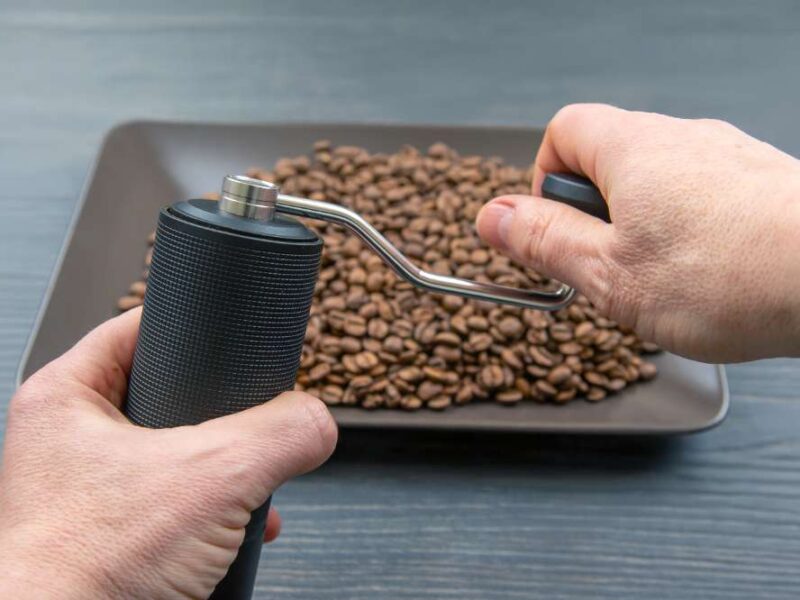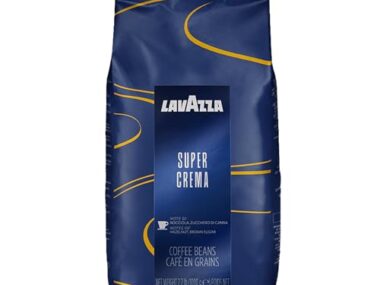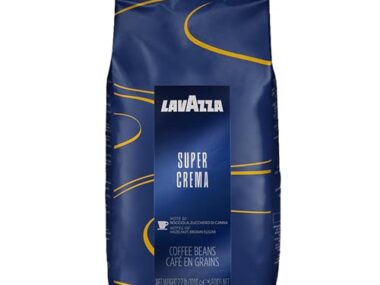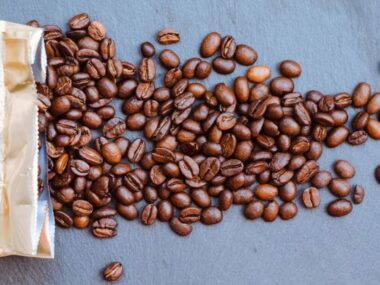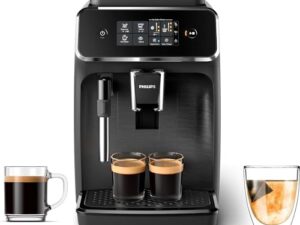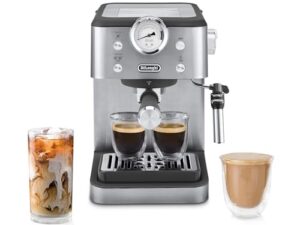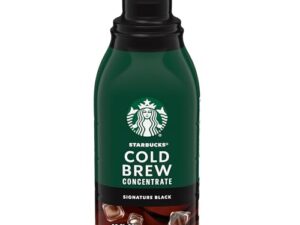You know that fresh cup of coffee tastes better than anything from a store-bought pack. But the secret isn’t just the beans—it’s how you grind them.
Grinding your own coffee beans at home lets you unlock richer flavors and a fresher aroma every time. If you’ve ever wondered how to get the perfect grind without fancy machines or confusing steps, this guide is for you. By the time you finish reading, you’ll have simple, effective tips that make grinding coffee beans easy and enjoyable.
Ready to take your coffee game to the next level? Let’s dive in.
Choosing The Right Coffee Beans
Choosing the right coffee beans is the first step to making a delicious cup of coffee at home. The flavor and aroma of your coffee depend heavily on the type and quality of beans you select. Knowing the different types of coffee beans and how to keep them fresh can help you enjoy a better coffee experience every day.
Types Of Coffee Beans
Coffee beans come from different plants and regions. The two main types are Arabicaand Robusta. Each type has unique flavors and characteristics.
- Arabica:Known for a smooth, mild taste with a hint of sweetness. It has less caffeine and grows best at high altitudes.
- Robusta:Has a stronger, more bitter flavor with a higher caffeine content. It is often used in espresso blends.
Besides these, you might find blends that mix both types to balance flavor and strength.
| Coffee Bean Type | Flavor Profile | Caffeine Content | Growing Conditions |
|---|---|---|---|
| Arabica | Smooth, sweet, mild | Lower | High altitude, cooler climates |
| Robusta | Strong, bitter, earthy | Higher | Low altitude, warmer climates |
Choosing beans depends on your taste. For a lighter, fruity coffee, try Arabica. For a bold, intense cup, Robusta works well. Blends offer a middle ground.
Freshness And Storage Tips
Fresh coffee beans make better coffee. Beans start losing flavor soon after roasting. Buying fresh beans ensures a rich taste and aroma.
Store your coffee beans correctly to keep them fresh for longer. Follow these tips:
- Use an airtight container:Prevents exposure to air, which causes staleness.
- Keep away from light:Light breaks down coffee oils and flavors.
- Store in a cool, dry place:Avoid heat and moisture that spoil beans.
- Avoid the fridge or freezer:Moisture can damage the beans unless you freeze in small, sealed bags.
Try to grind beans right before brewing. Grinding increases surface area, making beans lose freshness faster. Buy beans in small amounts to use quickly.
Here is a simple checklist for storing coffee beans:
- Use an opaque, airtight container.
- Keep container in a cupboard or pantry.
- Do not expose beans to heat or sunlight.
- Buy small quantities to maintain freshness.
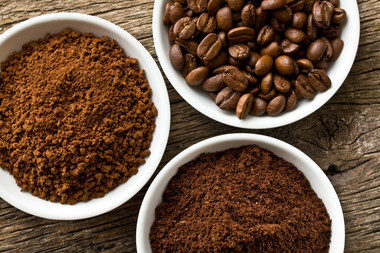
Credit: kimberleycoffee.com.au
Selecting A Grinder
Selecting the right grinder is a key step in grinding coffee beans at home. The grinder affects the taste, texture, and freshness of your coffee. Choosing between different types can seem confusing. Understanding the main options helps you find the best fit for your needs and budget.
Blade Grinders Vs Burr Grinders
Blade grinders use a spinning blade to chop coffee beans. They are usually less expensive and easy to use. The main downside is uneven grind size. This can cause some coffee grounds to be too fine and others too coarse. Uneven grinding affects how water extracts flavors from the beans, leading to a less balanced cup.
Burr grinders crush beans between two burrs. This gives a consistent grind size. Burr grinders offer better control, allowing you to choose the grind coarseness for different brewing methods. They keep coffee flavor fresh by avoiding overheating the beans.
| Feature | Blade Grinder | Burr Grinder |
|---|---|---|
| Grind Consistency | Uneven | Consistent |
| Price | Low | Medium to High |
| Heat Generation | High (may affect flavor) | Low (preserves flavor) |
| Control Over Grind Size | Limited | Precise |
| Best For | Casual coffee drinkers | Serious coffee lovers |
Burr grindersare ideal if you want a better taste and more control. Blade grinderswork for simple, quick use and smaller budgets.
Manual Vs Electric Options
Manual grinders require hand power to turn the burrs or blades. They are usually compact and quiet. Manual grinders let you control the speed and pressure, which some say improves flavor. They do not need electricity, making them perfect for travel or small kitchens.
Electric grinders work quickly and with less effort. They are great for busy mornings or when grinding large amounts of coffee. Electric grinders often have settings to adjust grind size easily. They can be louder and take up more space than manual ones.
| Feature | Manual Grinder | Electric Grinder |
|---|---|---|
| Speed | Slow | Fast |
| Effort | High (requires hand power) | Low (push button) |
| Noise Level | Quiet | Loud |
| Portability | High | Low |
| Price Range | Low to Medium | Medium to High |
Choose a manual grinderfor quiet, portable use and more hands-on control. Pick an electric grinderfor speed and convenience, especially if you make coffee often.
Grinding Techniques
Grinding coffee beans at home allows full control over flavor and freshness. Grinding techniquesaffect how your coffee tastes. The right grind size and consistent grinding help extract the best flavor. Different brewing methods require different grind sizes. Using the proper technique improves taste and aroma. Understanding how to adjust grind size and keep grinding consistent is key for great coffee every time.
Adjusting Grind Size
Adjusting grind size means changing how coarse or fine your coffee grounds are. The grind size affects brewing time and flavor. For example, a coarse grind suits French press, while a fine grind works for espresso. Here is a simple guide:
- Coarse:Large, chunky grounds. Use for French press or cold brew.
- Medium:Similar to sand. Good for drip coffee makers and pour-over.
- Fine:Powder-like. Best for espresso machines.
- Extra Fine:Almost like flour. Used for Turkish coffee.
Many grinders have settings to adjust grind size. Start with a medium setting, then adjust based on taste. Too coarse can taste weak or watery. Too fine can taste bitter or over-extracted.
| Grind Size | Best For | Flavor Effect |
|---|---|---|
| Coarse | French Press, Cold Brew | Smooth, full-bodied |
| Medium | Drip Coffee, Pour Over | Balanced, clean |
| Fine | Espresso | Strong, intense |
| Extra Fine | Turkish Coffee | Rich, thick |
Tip:Adjust grind size in small steps. Test each change by brewing. Find the perfect grind for your taste.
Consistent Grinding Methods
Consistency in grinding ensures every cup tastes great. Uneven grounds cause uneven extraction, ruining flavor. Using the same method each time keeps results steady. Here are key tips for consistent grinding:
- Use the same grinder:Different grinders produce different results.
- Measure beans:Use a scale for the same amount every time.
- Set grind size once:Avoid changing settings frequently.
- Grind just before brewing:Fresh grounds taste better.
- Clean grinder regularly:Old coffee oils affect flavor and consistency.
Manual grinders require steady hand motion. Use even pressure and speed to avoid uneven grounds. Electric grinders often provide more uniform results. Choose burr grinders over blade grinders for better consistency.
Here is an example routine for consistent grinding:
- Weigh 20 grams of coffee beans.
- Set grinder to medium for drip coffee.
- Grind beans in one continuous motion.
- Use grounds immediately to brew.
- Clean grinder after use to remove residue.
Remember:Small changes in grind size or method affect flavor. Stay consistent to enjoy your perfect cup every morning.

Credit: kauaicoffee.com
Matching Grind Size To Brewing Methods
Grinding coffee beans at home allows control over flavor and freshness. The grind size affects how water interacts with coffee grounds during brewing. Matching the grind size to the brewing method ensures the best taste and extraction. Using the wrong grind can cause under-extraction or over-extraction, leading to weak or bitter coffee. Understanding which grind works best for each brewing style makes a big difference in your cup.
Coarse Grind For French Press
The French press uses a metal mesh filter, so coffee grounds stay in the water longer. A coarse grindis best here. Large particles allow water to flow easily and prevent over-extraction. Too fine a grind will make the coffee bitter and muddy.
Coarse grounds look like sea salt or breadcrumbs. They are easy to press down and don’t pass through the mesh filter. A good coarse grind helps:
- Extract flavors evenly during the 4-minute brew
- Prevent coffee from being gritty or sludgy
- Make pressing the plunger smooth and easy
| Grind Size | Appearance | Brewing Time | Ideal Use |
|---|---|---|---|
| Coarse | Large, chunky | 4 minutes | French Press |
For best results, grind beans just before brewing. Store beans whole to keep freshness. Use a burr grinder for a consistent coarse grind. Blade grinders can create uneven sizes, affecting taste.
Medium Grind For Drip Coffee
Drip coffee makers use a paper or metal filter, and water flows through the grounds quickly. A medium grindworks well here. It looks like regular sand and balances extraction speed and flavor.
Medium grounds allow water to pass at the right speed. Too coarse, and coffee will taste weak. Too fine, and the filter may clog, causing bitterness.
- Grind size resembles granulated sugar
- Extraction time around 5 minutes
- Works best with automatic drip machines and pour-over brewers
| Grind Size | Appearance | Extraction Time | Brewing Methods |
|---|---|---|---|
| Medium | Granular, sand-like | 4-5 minutes | Drip Coffee, Pour Over |
Use a burr grinder to get a uniform medium grind. This consistency helps avoid over or under-extraction. Adjust grind size slightly based on taste and brewing time.
Fine Grind For Espresso
Espresso machines force hot water through tightly packed coffee quickly. A fine grindis necessary. Fine grounds allow proper pressure and fast extraction.
Fine grind looks like table salt or sugar crystals. It packs tightly, creating resistance needed for espresso’s rich flavor and crema. Too coarse a grind will produce weak, watery espresso. Too fine can cause over-extraction and bitterness.
- Grind size similar to table salt
- Extraction time around 25-30 seconds
- Essential for espresso machines and AeroPress (with short brew time)
| Grind Size | Appearance | Extraction Time | Brewing Methods |
|---|---|---|---|
| Fine | Powdery, salt-like | 25-30 seconds | Espresso, AeroPress |
Use a high-quality burr grinder for a fine, even grind. Consistency is key to avoid channeling and uneven extraction. Experiment slightly with grind size to match your machine and taste preference.
Cleaning And Maintenance
Grinding coffee beans at home requires not only the right technique but also proper care for your grinder. Cleaning and maintenancekeep your grinder working well and ensure your coffee tastes fresh. Dirt and leftover oils can build up inside the grinder and affect flavor. Regular cleaning removes these residues and stops damage. Proper maintenance also extends the life of your grinder, saving money on repairs or replacements.
Regular Grinder Cleaning
Regular cleaning is key to keeping your grinder in good shape. Coffee oils and fine grounds collect inside the grinder parts over time. This build-up can cause your grinder to clog, work slower, or make your coffee taste bitter or stale.
Follow these steps to clean your grinder:
- Unplug the grinder to avoid accidents.
- Remove the hopper and any detachable parts.
- Brush out loose coffee grounds with a small, soft brush.
- Use a dry cloth or paper towel to wipe the inside.
- If the grinder allows, remove burrs or blades and clean them with a damp cloth.
- Let all parts dry completely before reassembling.
For electric grinders, avoid water on the motor or electrical parts. Clean these carefully with a dry cloth only. Some grinders benefit from occasional grinding of dry rice or grinder cleaning tablets to remove stubborn oils. Check your grinder’s manual for specific cleaning tips.
| Cleaning Task | Frequency | Tools Needed |
|---|---|---|
| Brush out grounds | After every use | Soft brush |
| Deep clean burrs/blades | Once a week | Damp cloth, screwdriver (if needed) |
| Clean hopper and lid | Once a week | Warm water, mild soap |
Preventing Cross-contamination
Cross-contamination happens when flavors mix between different coffee beans or other substances. This can ruin the taste of your coffee and cause allergic reactions for some people. Proper care stops this problem.
Tips to prevent cross-contamination:
- Clean the grinder fullybefore switching bean types. Even small amounts of leftover coffee can change the flavor.
- Use separate grindersfor different bean types or flavors if possible.
- Store beans properlyin sealed containers to avoid moisture and aroma mixing.
- Label your containersto avoid confusion and mixing of beans.
- Avoid grinding spices or other foodsin your coffee grinder.
Keeping these habits protects your coffee’s pure taste and keeps your grinder safe. For households with allergy concerns, thorough cleaning is a must. Regularly wiping down the grinder’s exterior and using compressed air to blow out hidden particles also helps.
Tips For Better Coffee Flavor
Grinding coffee beans at home brings freshness and better flavor to your cup. Small changes in grinding can improve the taste a lot. These tips help you get the best flavor from your coffee beans. Focus on when to grind and how much coffee to use. Both affect the final taste more than many think. Follow these simple steps to enjoy rich, fresh coffee every day.
Grinding Right Before Brewing
Grinding coffee beans just before brewing keeps the flavor strong. Coffee beans start to lose their taste soon after grinding. This happens because of exposure to air, heat, and moisture. The oils and aromas that make coffee special vanish quickly.
Benefits of grinding fresh:
- Preserves natural oils and aromas
- Results in richer and fresher coffee
- Reduces bitterness and stale taste
Grinding beans right before brewing means you capture all the fresh flavors. Avoid grinding too early and storing ground coffee. It loses taste fast and can make your coffee weak or bitter.
Try to grind the exact amount you need each time. This practice helps keep coffee fresh and tasty. Also, keep your grinder clean. Old coffee residue can mix with fresh grounds and spoil flavor.
| Time of Grinding | Flavor Quality | Notes |
|---|---|---|
| Right Before Brewing | High | Best freshness and aroma |
| Hours Before Brewing | Medium | Some flavor loss |
| Pre-ground Coffee Stored | Low | Flavor fades quickly |
Measuring Coffee Grounds Accurately
Using the right amount of coffee grounds is key to good taste. Too little coffee makes weak coffee. Too much makes it bitter or too strong. Measuring coffee accurately helps balance the flavor and strength.
Use a kitchen scale for best results. Weighing coffee grounds gives you control over the brewing process. If no scale is available, use standard tablespoons but keep it consistent.
Recommended coffee-to-water ratios:
- For drip coffee: 1 to 2 tablespoons per 6 ounces of water
- For espresso: about 18 to 20 grams per shot
- For French press: 1 to 2 tablespoons per 4 ounces of water
Try these steps to measure coffee grounds:
- Use a digital scale for precision
- Pour coffee beans on scale and note weight
- Grind only the amount you need
- Adjust the amount based on taste preferences
Keeping measurements consistent helps you make coffee just how you like it every time. Write down your favorite ratio and use it each time you brew. This small effort improves coffee flavor and avoids waste.

Credit: plainsight.coffee
Frequently Asked Questions
What Are The Best Tools To Grind Coffee Beans At Home?
The best tools include burr grinders, blade grinders, and manual hand grinders. Burr grinders offer consistent grind size, ideal for brewing. Blade grinders are affordable but less consistent. Manual grinders provide control and portability. Choose based on budget, grind consistency needs, and brewing method.
How Does Grind Size Affect Coffee Flavor?
Grind size impacts extraction and flavor balance. Fine grinds extract more quickly, ideal for espresso. Coarse grinds extract slower, suitable for French press. Incorrect grind size can cause over-extraction or under-extraction, resulting in bitter or weak coffee. Adjust grind size to match your brewing method.
Can I Grind Coffee Beans Without A Grinder?
Yes, alternatives include mortar and pestle, rolling pin, or blender. These methods require more effort and may yield inconsistent grind sizes. For best flavor, use a proper coffee grinder. However, in a pinch, these options can work for home coffee grinding.
How Long Should I Grind Coffee Beans At Home?
Grinding time depends on grinder type and desired grind size. Burr grinders take 10-20 seconds for medium grind. Blade grinders require short pulses to avoid overheating beans. Over-grinding can cause bitterness; under-grinding leads to weak coffee. Monitor time and adjust for your preferred brew style.
Conclusion
Grinding coffee beans at home brings fresh flavor to every cup. Choose the right grind size for your brewing method. Use a clean grinder to keep taste pure. Grinding just before brewing keeps coffee strong and tasty. Practice makes it easier and more fun.
Enjoy the rich aroma and bold taste of fresh ground coffee. Small steps lead to better coffee moments every day. Try different grind settings to find what you like best. Fresh coffee starts with fresh grounds. Simple, fresh, and delicious—coffee your way.
